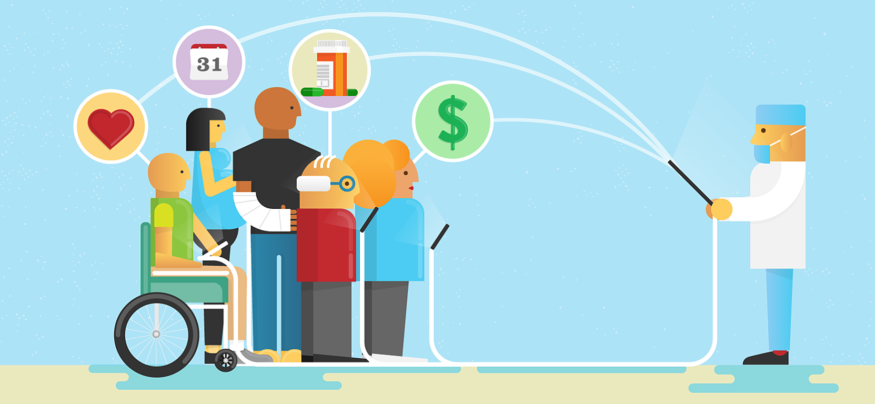Improved communication between healthcare providers and patients almost always results in greater patient satisfaction and better outcomes.
The reasons are clear: Exchanging information about symptoms, treatment options, insurance coverage, test results and more means that patients and caregivers are working in collaboration, leaving both groups more knowledgeable and better informed.
Email Communication
Thanks to digital technology, providers and patients now have more ways than ever to communicate. Recent research shows the tangible benefits of digital healthcare (often called connected care).
A survey of patients with chronic conditions published last December in the American Journal of Managed Care found that “nearly one-third of patients who sent an email to providers reported that it had improved their overall health.” In addition, a survey by Kaiser Permanente showed that more than one in three respondents who used email to communicate with providers said doing so reduced their phone contacts or office visits.
While email remains the most widely used form of digital communication — 91 percent of American adults send and receive email, according to Pew Research Center — consumers and healthcare professionals now can also communicate via text, secure messaging, patient portals, mobile devices and mobile apps.
Patient Web Portals
Patient web portals offer consumers a versatile platform for obtaining information from and communicating with healthcare providers. Participants in the Kaiser Permanente study referenced above consisted of 1,041 patients with chronic conditions, including those who use Kaiser’s My Health Manager patient portal. In addition to providing patients with basic personal medical data, appointment schedules and insurance details, many Internet-based portals allow consumers to securely email and/or message healthcare providers, make payments and request refills of prescribed medications.
In a case study of a healthcare system based in Idaho, the Office of the National Coordinator for Health Information Technology (ONC) concluded that patient portals “benefit patient care and provider workflow.” In particular, patients said they appreciated the ability to:
- Communicate directly with providers
- Ask questions in between visits without having to make a phone call
- Submit requests online for medications and referrals
According to the ONC, some patients said they chose the Idaho group “in part because of the availability of the portal.” Providers in the Idaho healthcare system also said the portal freed up staff resources, as responding to emails takes less staff time than taking and routing incoming calls.
Mobile Technology
Another critical component of digital healthcare is mobile technology. Consumers can use their smartphones and tablets to securely access their patient portals, no matter where they are. Some providers offer mobile apps that make it easier for patients to communicate with them and access information. Providers also use mobile apps and wireless technology to automatically collect data about patients, such as weight and glucose levels.
With healthcare communication technology on the rise, improved digital communication options result in higher satisfaction rates and more informed patients and providers.
Learn more about how healthcare technology solutions can enhance efficiencies and improve the patient experience.







